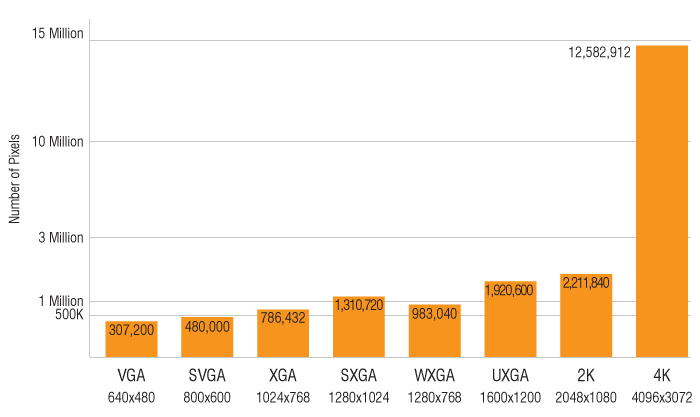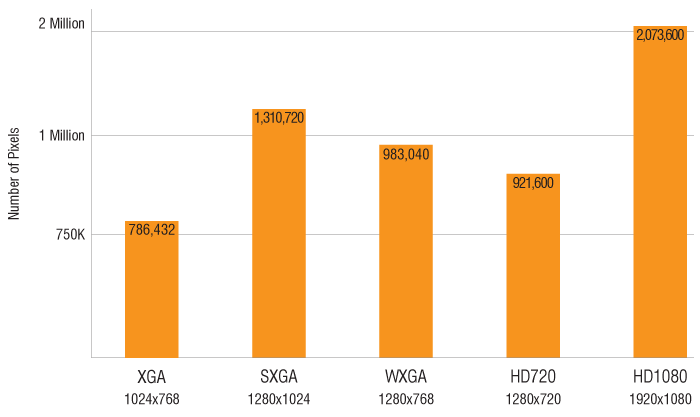Resolution Guide
Fast and easy guide to resolution.
You hear the term resolution anytime you are looking for a display device. But what does it mean? In short, resolution is the number of pixels, from side to side and top to bottom, which make up your image. For example, an SVGA projector has 800 pixels from side to side and 600 pixels from top to bottom for a total of 480,000 pixels. More pixels means a higher 'pixel density' and a crisper image. Below are two charts with the most common resolutions and their pixel densities.
So how do you know how many pixels are right for you?
For some applications, like projecting spreadsheets or documents, you need to have a higher pixel density. For other applications, like simple PowerPoint® presentations, you do not.
for a brief description of the most common uses for each resolution. If you would like to know more about which resolution is right for you, call and speak to one of our projector experts at 1-888-248-0675.

Chart above compares eight common resolutions and the enhanced pixel density as resolutions increase.

This chart compares popular home theater resolutions including common native 16:9 formats.
Looking for a projector? Click here or call (888) 248-0675
Resolution Guide
Lower prices than XGA.
Good choice for PowerPoint presentations.
Best choice for presenting with SVGA computers.
Good option for those who are updating a room with an existing 4:3 screen.
Better choice than SVGA for high definition video and home theater applications.
Best choice when using older computers with the XGA resolution.
Lower cost home theater solution.
Same resolution of most new laptops.
Best choice for business.
Use with a 16:10 screen.
Good for individuals who need visible fine detail like graphic artists.
Best choice for high tech applications (CAD drawings or medical display).
HD projectors are the top choice for home theater customers.
HD projectors provide the most detailed image for business, house of worship and education applications.
Highest available resolution on the market.
Minimal native 4K content exists.
Price points too high for many customers.
